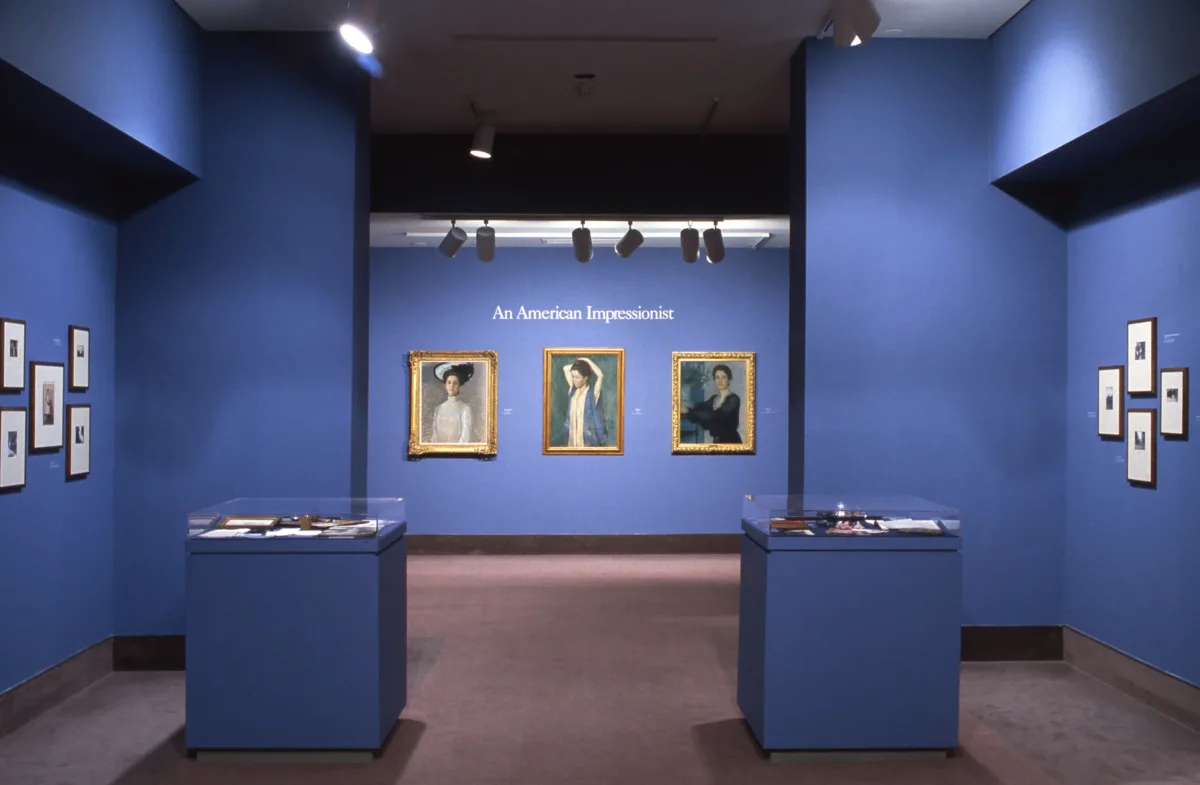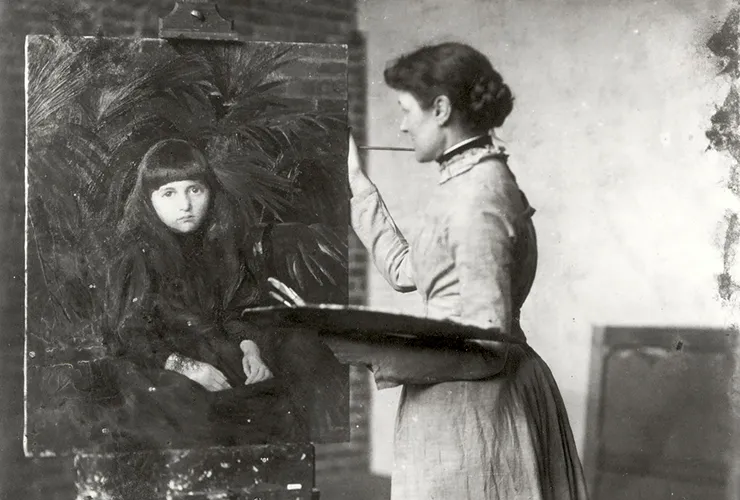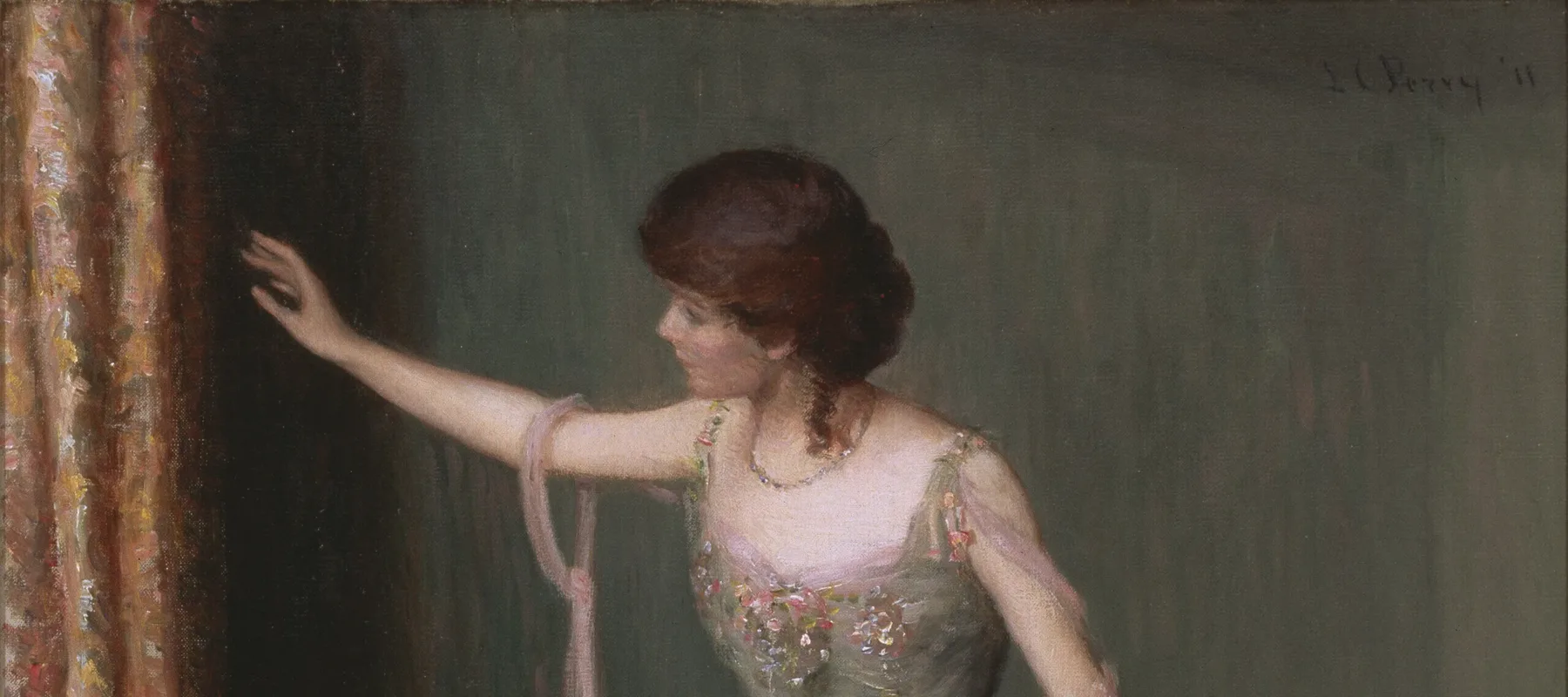NMWA presents the first major retrospective of American Impressionist painter Lilla Cabot Perry (1848-1933), opening on September 28. Lilla Cabot Perry: An American Impressionist brings together 75 works in oil and pastel from museums, galleries, and private collections throughout the country.
Lilla Cabot Perry was a daring and innovative artist, well-respected for her efforts to bring the then-revolutionary style of French Impressionism to the attention of the American public. Her career was unusual and exceptional. She became a painter at the age of 36, already married, and the mother of three. She also wrote poetry and studied music. Her circle of friends included Henry James, John La Farge, Bernard Berenson, William Dean Howells, and Mary Cassatt. Like these artists and writers, Perry was accomplished and able to help support her family through the sale of her art at a time when societal mores discouraged women from financial success.
In 1889, Perry saw the work of Claude Monet at the Galerie Georges Petit in Paris. She at once understood the importance of Impressionism at a time when it was still largely unacceptable to the American public. In the summer of 1889, Perry moved to Giverny to a house near Monet. She and her family established a close relationship with the Monets that endured for the remainder of Perry’s life. With the encouragement of Monet, Perry experimented with Impressionistic techniques and incorporated them into her paintings. Her careful attention to the radical lessons of Impressionism brought a new expressiveness to her work as she blended the light-filled palette of Impressionism with the formalism of the academic approach. This merging of the two styles is beautifully presented in the Young Bicyclist (Alice Perry), ca. 1894-95.
Perry’s training was varied and multifaceted. She began to study art in 1884, receiving her first critiques from Alfred Quentin Collins and later from Robert Vonnoh and Dennis Bunker of Boston’s Cowles Art School. While in Paris, she studied at the Colarossi and Julian academies. Like all academically trained artists, she learned by copying Old Master paintings in the Louvre, and she continued to study the art of the past during trips to Madrid, Florence, Venice, and Munich. In 1898, the Perrys moved to Tokyo, where they lived for the next three years. The woodcut prints of Utamaro and Hokusai had a tremendous impact on the paintings she created in Japan. These works included portraits and landscapes, particularly Impressionistic views of Mount Fuji. Perry was the only American woman artist known to have lived and worked in Japan during the 19th century.
Upon her return to the United States, Perry resumed her distinguished position in the inner circle of the Boston art scene. Her reputation as an important Boston School painter had long been established, beginning with her St. Botolph Club exhibition in 1897 and the bronze medal awarded at the 1904 Louisiana Purchase International Exposition in St. Louis. In his 1933 memorial tribute, Boston critic Albert Franz Cochrane summarized Lilla Cabot Perry’s dedication to art and her understanding of the avant-garde, stating “Lilla Cabot Perry’s brush practically wrote the history of contemporary art development in America from its earliest indebtedness to the French and German academies to its own flowering.”

Installation image of Lilla Cabot Perry: An American Impressionist
The Artist,
Lilla Cabot Perry
Although she had no formal art training until age 36, Lilla Cabot Perry became a professional painter and a devotee of French Impressionism with a formidable body of work.
